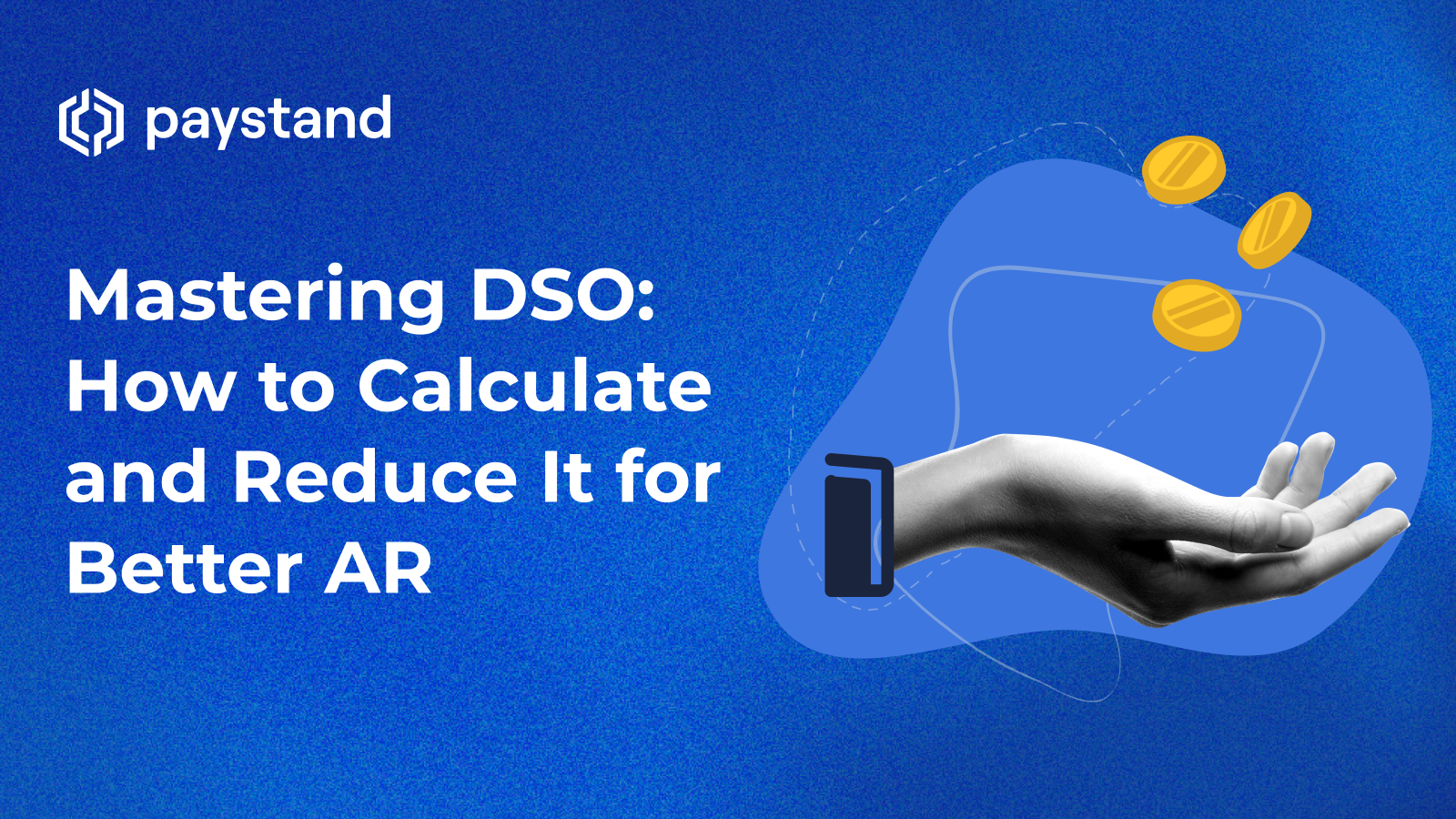Mastering DSO: How to Calculate and Reduce It for Better AR

Table of Contents
- What Does Days Sales Outstanding Mean?
- Why is DSO important?
- Is Days Sales Outstanding the Same as Receivables Turnover?
- How DSO Impacts Accounts Receivable
- How to Reduce DSO
- Payment Collection and Payment Reminders
- How DSO Links to Cash Flow Management
Key Takeaways
- DSO Definition: Days Sales Outstanding measures the average time it takes a business to collect payment after a sale.
- How to Calculate DSO: Use a straightforward formula to evaluate payment collection efficiency and its impact on cash flow.
- Difference from Receivables Turnover: DSO and receivables turnover are complementary metrics, focusing on different aspects of AR management.
- Improving DSO: Strategies like automation, digital payments, and proactive reminders can significantly reduce DSO and enhance operational efficiency.
What Does Days Sales Outstanding Mean?
Days Sales Outstanding (DSO) is a key metric for evaluating how efficiently your business collects payments. It represents the average number of days it takes to convert credit sales into cash.
DSO is a vital part of cash flow management because it directly affects your working capital. A lower DSO means faster payment collections, improving liquidity and reducing reliance on external financing. Conversely, a higher DSO indicates inefficiencies in payment processes, which can strain cash flow and increase operational risks.
How to Calculate Days Sales Outstanding
The formula for DSO is:

This means it takes an average of 6 days to collect payments.
Why Is DSO Important?
DSO reflects the efficiency of your accounts receivable (AR) process. Understanding your DSO can help you:
- Identify bottlenecks in payment collection.
- Assess customer payment behavior.
- Forecast cash flow more accurately.
How to Calculate Accounts Receivable from DSO
To calculate accounts receivable using DSO, reverse the formula:

This reverse calculation is valuable for forecasting, identifying cash flow issues, and planning financial strategies.
Is Days Sales Outstanding the Same as Receivables Turnover?
DSO and receivables turnover are related but distinct:
- DSO: Measures the average time it takes to collect payments.
- Receivables Turnover: Tracks how many times receivables are collected in a given period.
The formula for Receivables Turnover:

While DSO focuses on time, receivables turnover emphasizes frequency. Together, these metrics provide a comprehensive view of AR performance.
How DSO Impacts Accounts Receivable
High DSO can negatively impact your business in several ways:
- Cash Flow Issues: Delayed payments restrict available funds for daily operations.
- Increased Costs: High DSO often leads to higher administrative costs for follow-ups and interest on borrowed capital.
- Customer Relationships: Inefficient collections can strain relationships with late-paying customers.
By closely monitoring and managing DSO, businesses can improve liquidity, reduce costs, and maintain healthy customer relationships.
How to Reduce DSO
To lower DSO and improve AR performance, consider these strategies:
- Automated Invoicing
- Send invoices promptly after sales to ensure faster collections.
- Digital invoicing platforms like Paystand simplify this process.
- Payment Reminders
- Automated reminders encourage customers to pay on time, reducing delays.
- Flexible Payment Options
- Offer multiple methods, such as ACH, EFT, credit cards, or digital wallets, to make payments more convenient.
- Digital Payment Platforms
- Use platforms like Paystand to streamline payment collection and reconciliation.
- Features like zero-fee payments and blockchain security improve efficiency and reduce costs.
Payment Collection and Payment Reminders
Payment collection and reminders play a crucial role in reducing DSO. Automating these tasks ensures:
- Fewer missed payments due to forgetfulness.
- A more predictable cash flow.
- Improved customer satisfaction with clear, consistent communication.
Integrating these tools into your AR process can dramatically reduce manual workloads and improve overall efficiency.
How DSO Links to Cash Flow Management
DSO is one of the key metrics in cash flow management. It directly affects how much cash a business has available for operations and growth. High DSO means funds are tied up in unpaid invoices, while low DSO ensures faster access to working capital.
By addressing DSO alongside other cash flow management strategies—like payment collection and automated reminders—you can build a stronger, more resilient financial foundation.
Reduce Your DSO with Paystand
Reducing DSO is crucial for improving cash flow and operational efficiency. Paystand offers automated invoicing, digital payment solutions, and integrated AR tools to help businesses streamline their payment processes and reduce delays.
Learn How Paystand Can Help Reduce Your DSO.





%20(1)%20(1).jpg?width=100&height=100&name=IMG_3752%20(1)%20(1)%20(1).jpg)